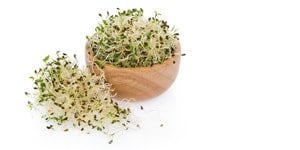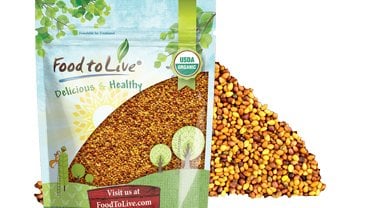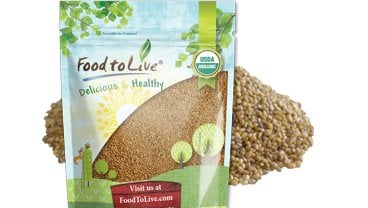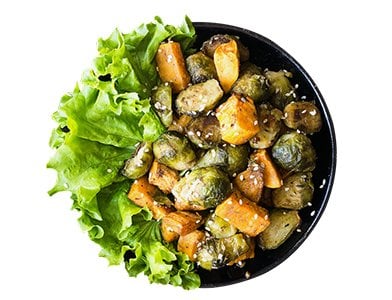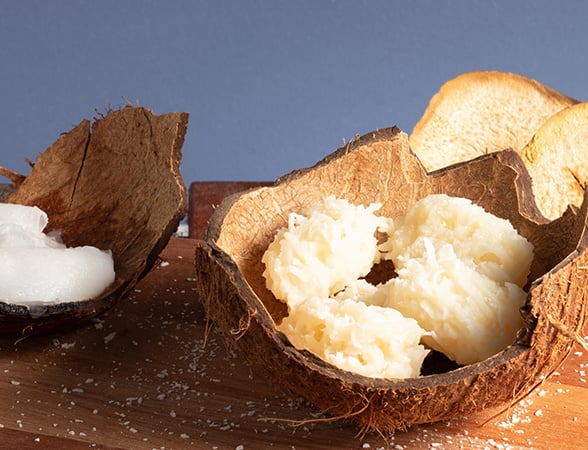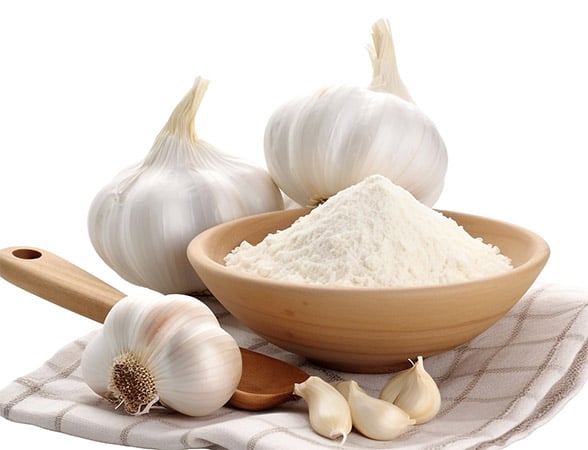March 18, 2024 · Written by Foodtolive Team
Microgreens vs Sprouts: What’s the Difference?
In the verdant world of miniature greens, two contenders stand out: microgreens and sprouts. While they may appear similar at first glance, a closer inspection reveals distinct differences that can revolutionize your culinary experiences. Join us as we embark on a journey to explore the nuances between these tiny powerhouses and discover why they deserve a place in your kitchen.
Definition and Characteristics
Microgreens, the diminutive darlings of the culinary scene, are essentially young vegetable greens harvested at a premature stage. Contrastingly, sprouts are germinated seeds that have just begun to grow, typically harvested before the development of true leaves. Microgreens boast vibrant colors, delicate leaves, and an array of flavors, while sprouts exhibit tender stems and a crunchy texture.
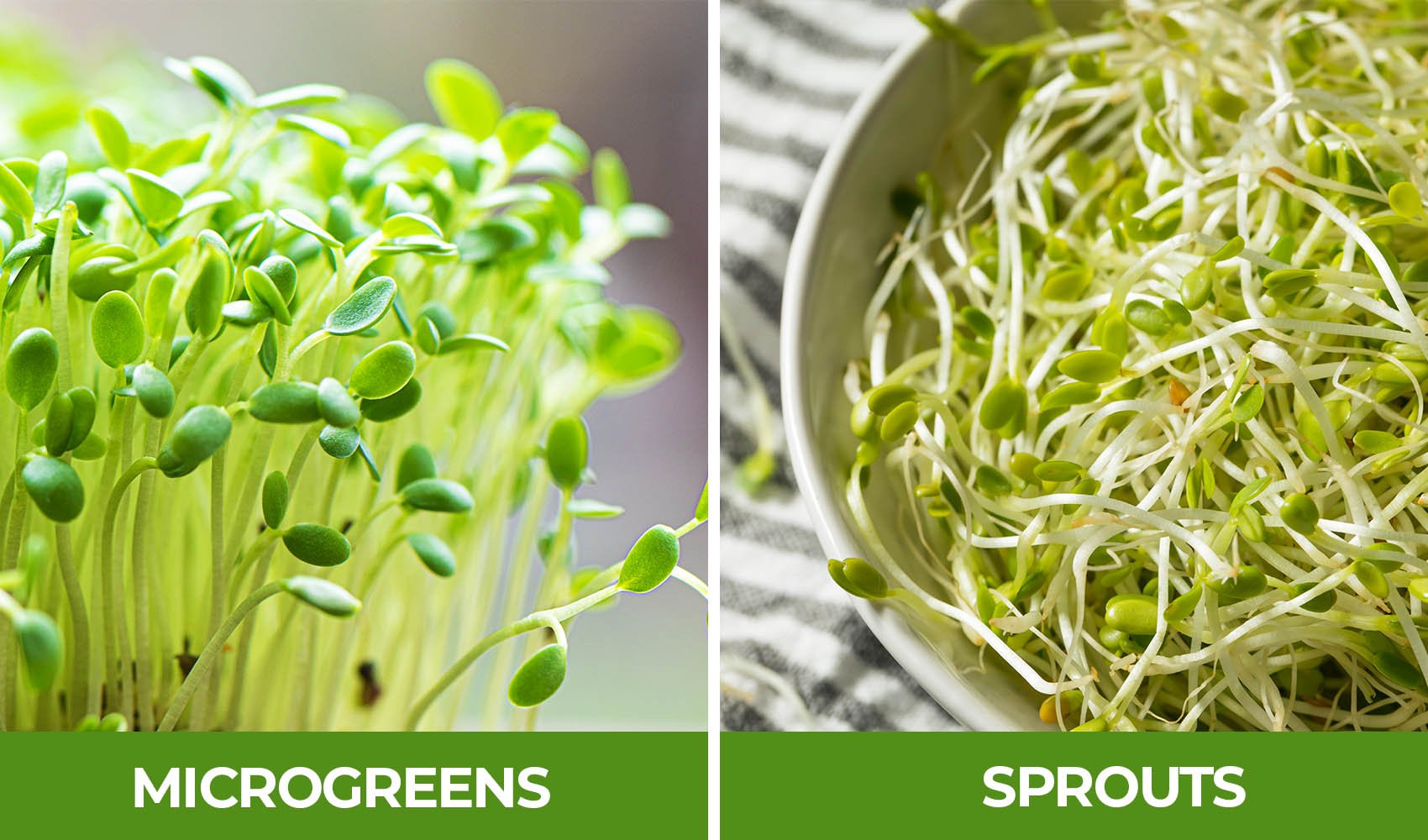 Nutritional Comparison
Nutritional Comparison
Nutritional Comparison: Delving into the nutritional content of both microgreens and sprouts reveals intriguing insights. Microgreens, harvested at an early stage of growth, are renowned for their rich array of vitamins, minerals, and antioxidants. However, sprouts, in their nascent form, also boast a commendable nutritional profile. While microgreens may have higher concentrations of certain nutrients, such as vitamins C and K, sprouts offer their own unique mix of beneficial compounds. For instance, sprouts are often prized for their enzyme content, which can aid digestion. Both microgreens and sprouts have their own strengths, making them valuable additions to any diet. So, when it comes to nutrition, it’s not about one being better than the other, but rather recognizing the diverse array of health benefits each brings to the table.
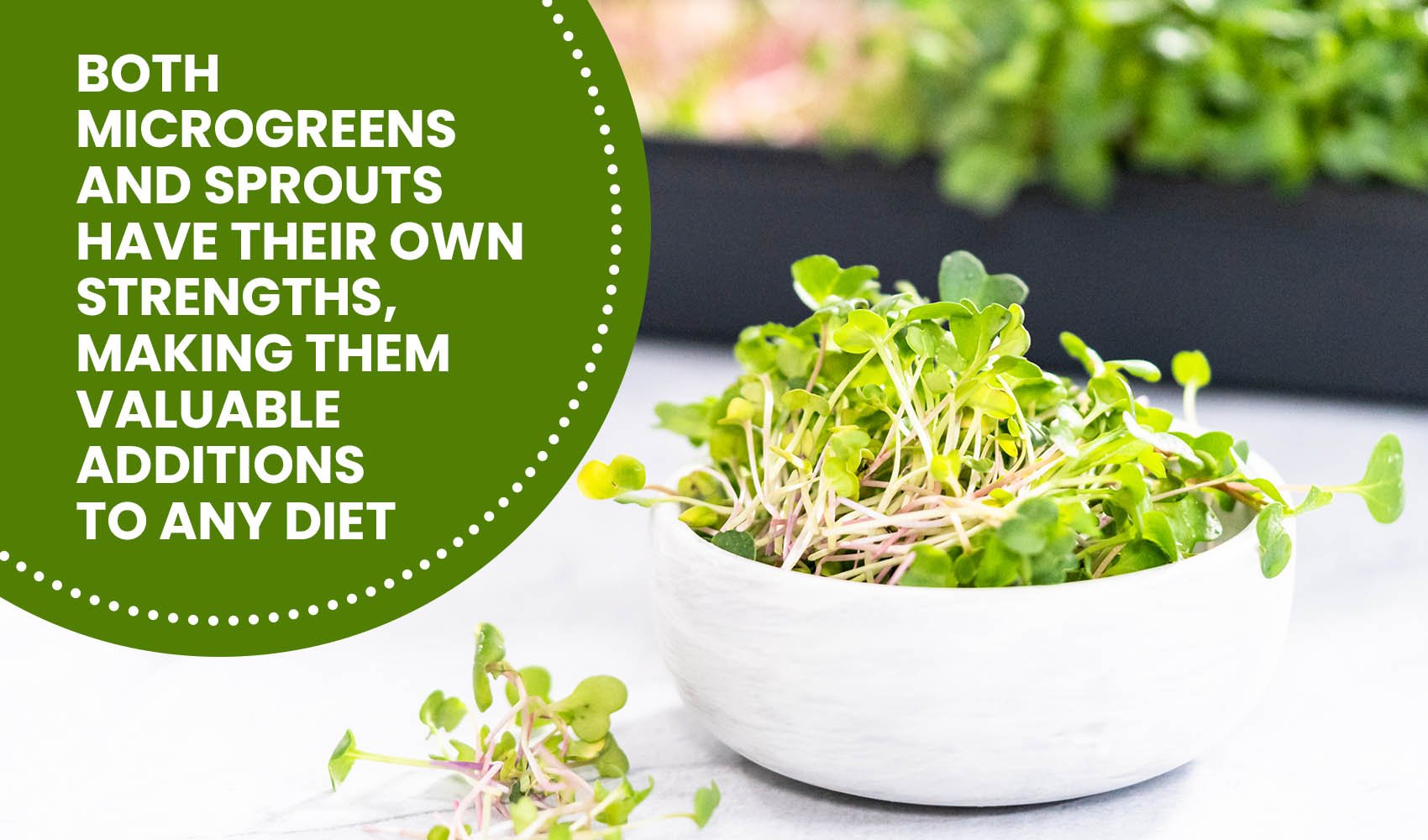 Flavor and Texture
Flavor and Texture
Delve into the world of microgreens, and you’ll encounter a symphony of flavors ranging from peppery arugula to earthy beet greens. On the other hand, sprouts offer a crisp, refreshing texture with a milder taste profile. Whether you prefer the robust bite of microgreens or the subtle crunch of sprouts, there’s a miniature green to suit every palate.
Culinary Uses
From elegant salads to wholesome sandwiches, microgreens and sprouts elevate dishes with their vibrant colors and distinct flavors. While microgreens add a gourmet touch as garnishes or salad ingredients, sprouts infuse sandwiches (try our Fresh Spring Sandwich with Sprouts) and wraps with a delightful crunch. Get creative in the kitchen and experiment with these tiny titans to elevate your culinary creations.
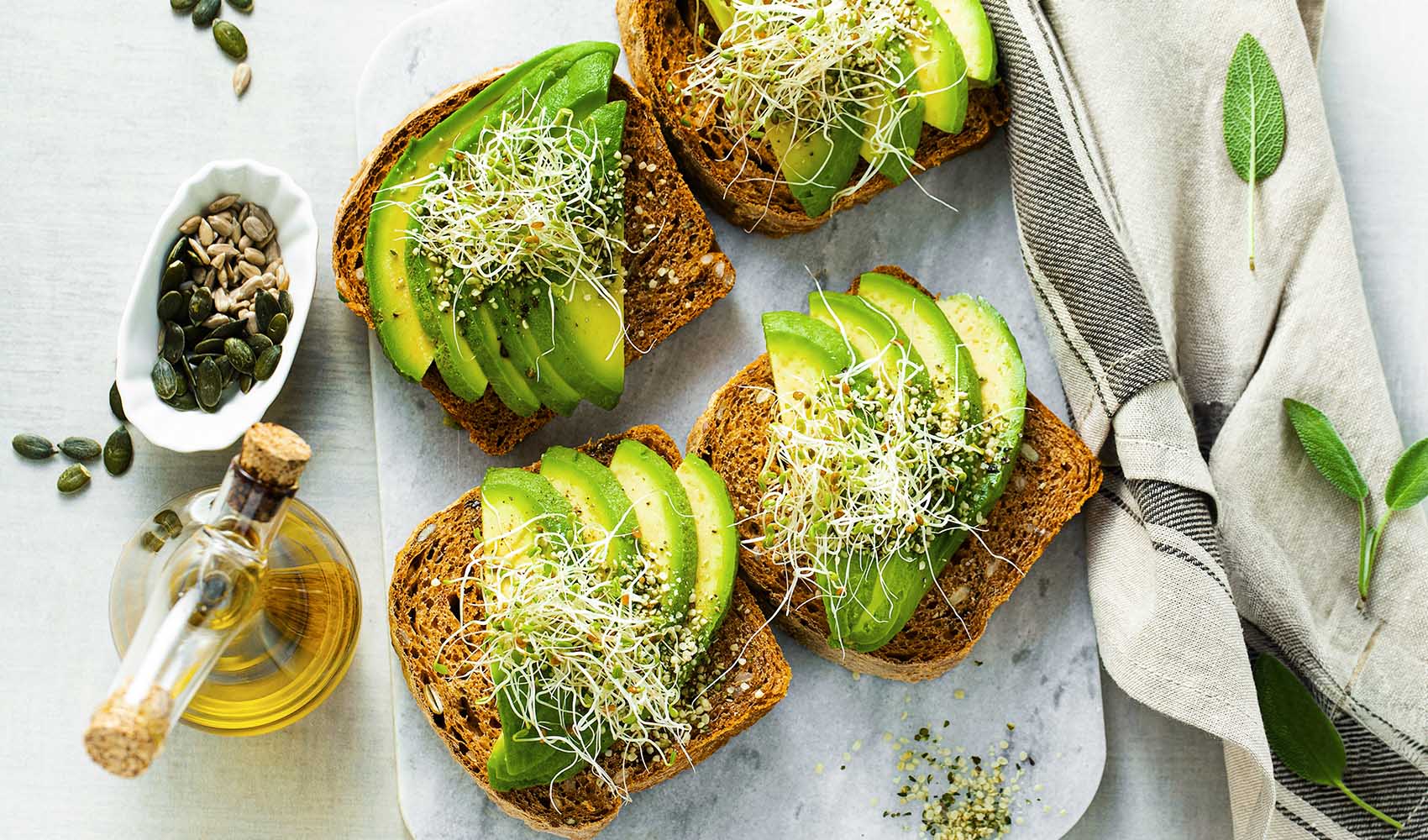 Growing Methods
Growing Methods
When it comes to cultivation, microgreens and sprouts follow distinct paths. While microgreens require soil, light, and careful nurturing over several weeks, sprouts thrive in a simple water-based setup, ready for harvest in a matter of days. Whether you’re a seasoned gardener or a novice enthusiast, there’s a growing method suited to your preferences and resources. Watch our video guide on sprouting seeds and unlock the secrets to a simple water-based setup that yields fresh sprouts in just days.
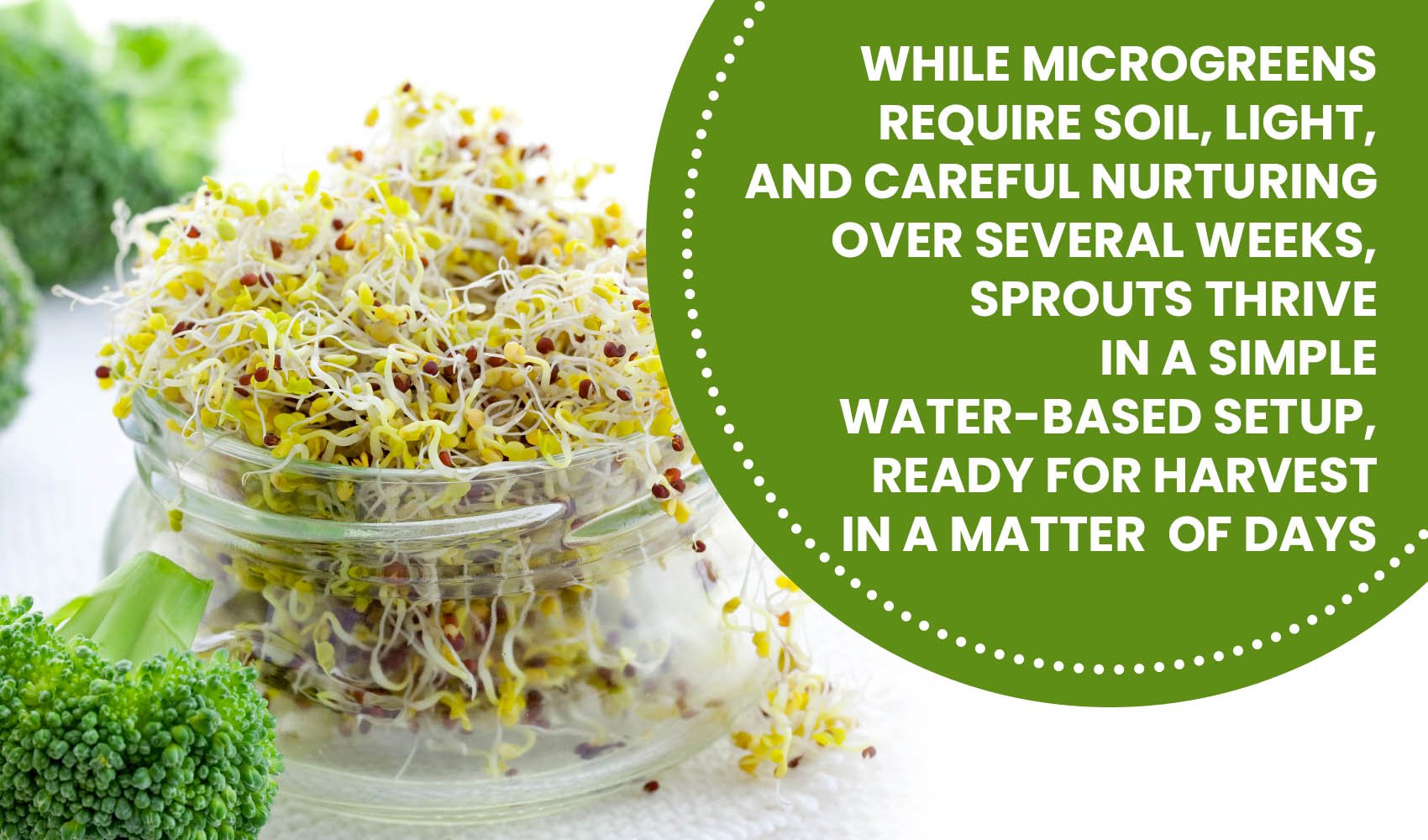 Food Safety
Food Safety
While microgreens and sprouts offer nutritional benefits, proper handling and hygiene are paramount to ensure food safety. Microgreens grown in soil may harbor bacteria if not handled correctly, while sprouts are susceptible to contamination during the germination process. By adhering to strict sanitation practices, you can minimize the risks associated with these miniature greens.
As we bid farewell to our exploration of microgreens and sprouts, it’s clear that these miniature greens hold immense potential to revolutionize your culinary adventures. Whether you’re drawn to the vibrant flavors of microgreens or the crisp texture of sprouts, there’s no denying the transformative power of these tiny titans. So, why choose one over the other when you can embrace both and embark on a journey of gastronomic discovery? Let your taste buds be your guide as you explore the green revolution unfolding in your kitchen.

